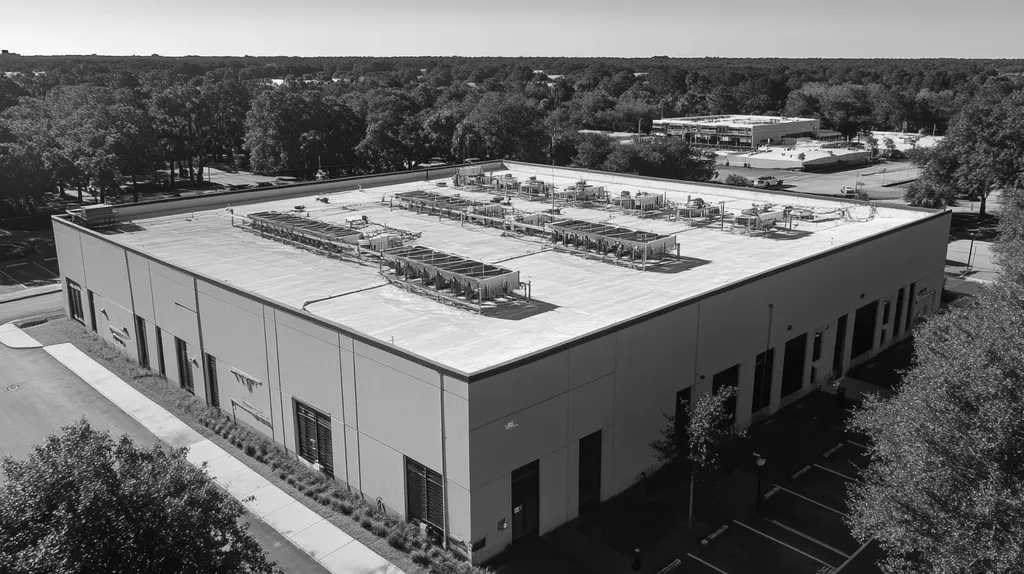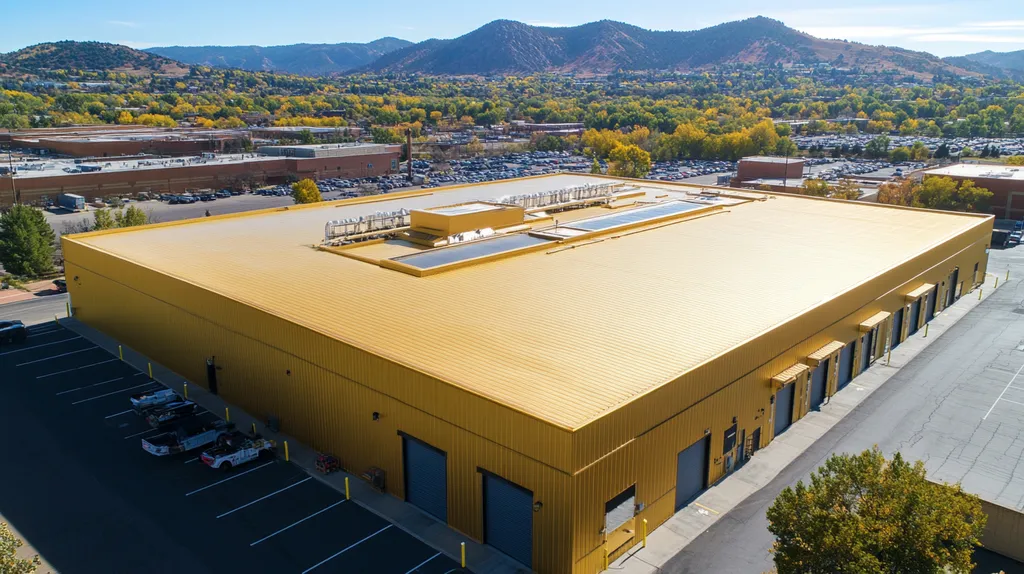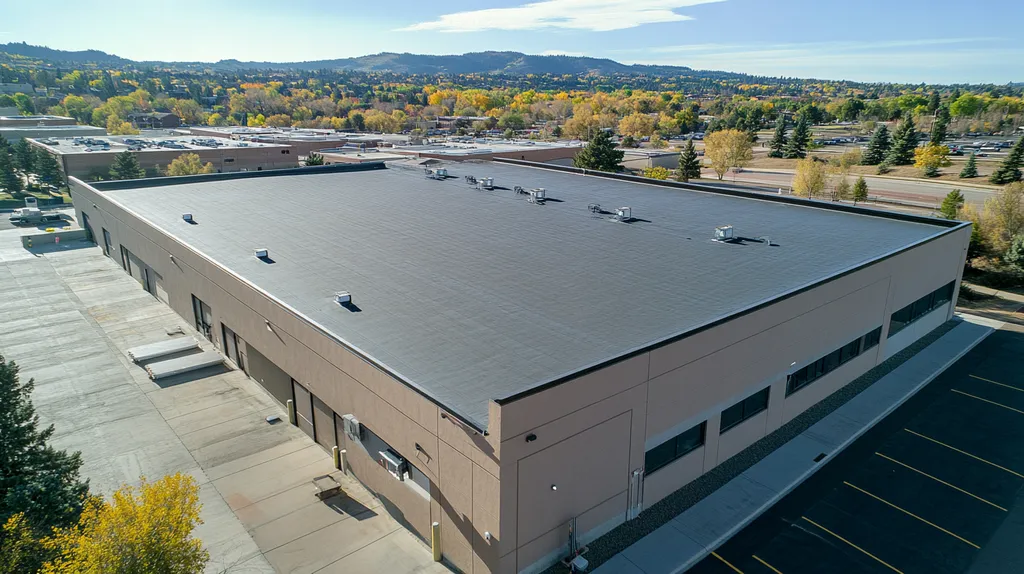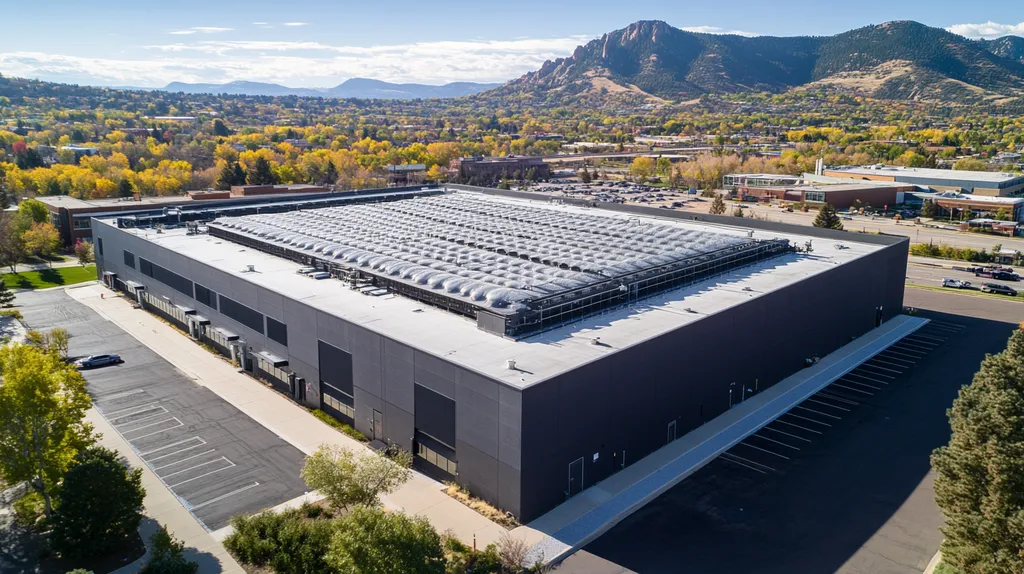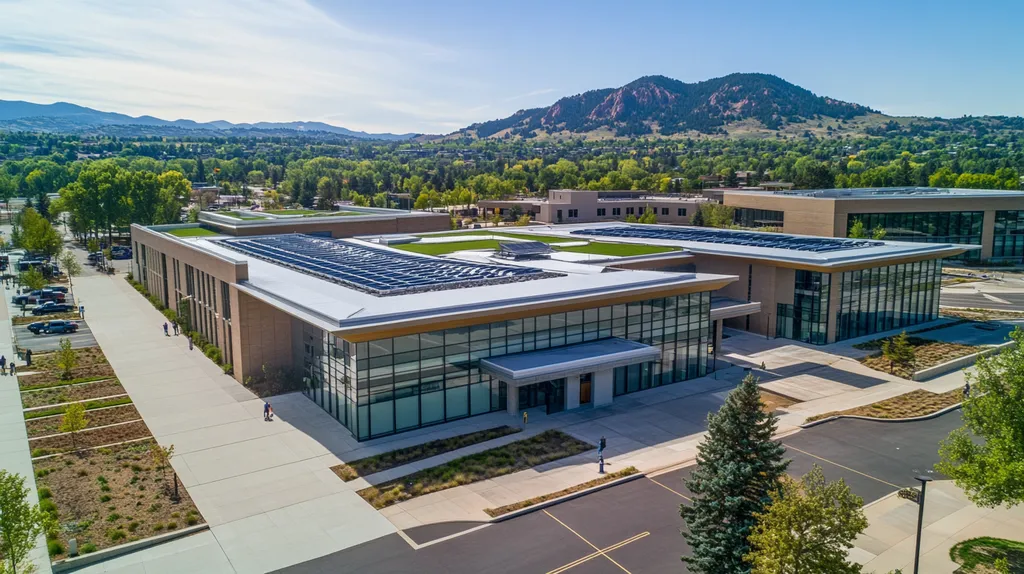Every year, industrial facilities lose millions of dollars due to roof failures, with studies showing that 85% of these failures stem from improperly managed penetrations. These critical points, where pipes, vents, and equipment breach the roof membrane, represent the most vulnerable areas of any industrial roofing system.
From structural damage to extensive water infiltration, the consequences of neglecting roof penetrations can cascade throughout a facility. Recent industry data indicates that proper penetration management can extend a roof’s lifespan by up to 40%.
This comprehensive guide examines how penetrations affect roof durability and provides facility managers with actionable strategies for inspection, maintenance, and risk mitigation. Understanding these crucial elements is essential for protecting valuable assets and ensuring operational continuity.
SECTION 1: PERFORMANCE FACTORS
The durability of an industrial roof faces critical threats from penetrations, which include openings like vents, pipes, and HVAC units. In fact, almost 80% of industrial roofs in the United States encounter problems related to penetrations, leading to significant water intrusion and structural issues. For facility managers, grasping these challenges is vital to maintain the roof’s integrity. This section delves into the specifics of roof penetrations, their implications for durability, and their influence on overall structural integrity.
Understanding Roof Penetrations
Roof penetrations are an unavoidable aspect of industrial facilities, essential for accommodating plumbing and electrical systems. Yet, every penetration presents a potential weak point in the roof’s defenses against weather-related damage. Facility managers should be aware that even minor openings can escalate into major vulnerabilities if not properly sealed or maintained.
There are several types of penetrations, including those for mechanical systems, electrical wiring, and plumbing fixtures. Each category mandates meticulous attention during installation and maintenance to avert long-term challenges. Regular inspections of seals and flashing around these penetrations are crucial for identifying potential issues early on.
If deteriorating seals are not addressed, moisture can accumulate, resulting in mold growth and structural decay. Maintenance schedules must prioritize inspections at seasonal transitions or after severe weather conditions.
Moreover, advancements in sealing technology are enhancing the effectiveness of these crucial areas. Facility managers should actively seek modern materials and methods that help ensure penetrations remain watertight and durable.
Key Action Items
Impact on Durability
Poorly managed roof penetrations can substantially shorten an industrial roof’s lifespan. Research indicates that 70% of water-related damages stem from these vulnerable areas. When moisture infiltrates through penetrations, internal roofing layers can deteriorate quickly, resulting in prohibitively expensive repairs.
Additionally, when moisture accumulates, it threatens structural integrity by weakening support systems, which can cause sagging or instability. Addressing these issues swiftly with appropriate remediation strategies is essential to protect the building.
Effective drainage systems around penetrations are vital for maintaining roof durability. Facility managers should ensure that these areas are designed to direct water away and prevent pooling, which can compromise the integrity of the penetrations.
Routine inspections to catch early signs of wear can prevent far-reaching damage. This proactive approach is a smart resource-saving strategy that enhances operational efficiency.
Key Action Items
Structural Integrity
The consequences of penetrations extend well beyond immediate water damage, jeopardizing the overall structural integrity of the building. Openings that are not properly sealed can lead to problems such as rot, corrosion, or even complete roofing system failure. This not only impairs the roof but also jeopardizes the safety of everyone in the facility.
In inclement weather, penetrations can aggravate wind and snow-related stresses, further challenging the roof structure. Facility managers must ensure that all installations conform to manufacturer specifications and local building codes to avoid severe long-term issues.
Assessing the architectural design of the roofing system can pinpoint areas prone to stress accumulation due to penetrations. Regular evaluations of how these openings interact with the entire system will yield a deeper understanding of potential weaknesses.
By cultivating a proactive maintenance culture centered on managing penetrations, facilities can enhance the structural soundness of their roofs. This strategic focus leads to longer-lasting roofs and reduces repair costs over time.
Key Action Items
SECTION 2: FINANCIAL CONSIDERATIONS
The financial impact of managing industrial roof penetrations is profound and often underestimated. Property managers frequently encounter unexpected repair costs due to improper sealing around these vulnerable points. Research indicates that approximately 70% of roofing failures stem from inadequate sealing, making it essential for decision-makers to grasp these financial dynamics to enhance durability and control costs.
Cost of Roof Repairs
Repairing roof penetrations can impose a substantial financial strain, especially when leaks occur. Repair costs can range from $500 to $3,000 or more, depending on the severity and materials involved. If issues are not addressed promptly, these expenses can snowball, often exceeding initial estimates.
For instance, a leak from a poorly sealed pipe penetration can lead to extensive interior damage, such as mold and structural decay. These additional complications can significantly drive up overall repair expenses. Proactive management of penetrations is vital to minimizing financial risk.
Furthermore, ongoing penetration-related problems can disrupt operations. Roof failures may lead to facility downtime, impacting productivity and revenue. It is crucial for facility managers to understand that each dollar invested in effective penetration management can prevent far greater costs in the future.
Key Action Items
Preventive Maintenance Savings
Investing in preventive maintenance can yield significant savings over time. Regular inspections of roof penetrations help pinpoint potential issues before they escalate. Industry estimates suggest that proactive maintenance can cut repair costs by up to 50% compared to reactive strategies.
Facility managers should conduct annual assessments of all roof penetrations, including seals and flashings, for signs of deterioration. Addressing issues early can prevent costly leaks and enhance the roof’s overall lifespan.
Moreover, ongoing maintenance reduces the risk of secondary damages from leaks, such as water intrusion and thermal wear, which can complicate repairs. Therefore, preventive measures are not merely expenses; they represent smart investments that promote efficiency and minimize disease downtime.
Key Action Items
Longevity and ROI
The service life of an industrial roof is closely tied to effective management of penetrations. Properly sealed roof penetrations can dramatically extend a roof’s lifespan, offering a solid return on investment. With diligent maintenance, a roof can last 20 years or more, whereas neglected penetrations can significantly shorten this duration.
Research indicates that a well-maintained roof can achieve a 100% return on investment by its lifecycle’s end. Facilities that prioritize sealing and maintaining penetrations benefit from enhanced durability and reliability, leading to increased property values and reduced capital expenses for replacements.
Furthermore, strong penetration management enables lower energy costs and improved insulation, translating to further savings. As energy prices rise, a well-maintained roof’s efficiency can positively affect overall operational expenses.
Key Action Items
SECTION 3: COMPLIANCE REQUIREMENTS
For industrial roofs, compliance with regulations is not just a checklist item but a cornerstone for ensuring longevity and safety. Ignoring building codes and industry standards can lead to costly repairs and legal issues. The International Building Code (IBC), for instance, dictates essential regulations for roof penetrations, and neglecting these can result in significant leaks or even structural failures.
Building Code Adherence
Building codes play a vital role in safeguarding the structural integrity and occupant safety of facilities. They specify critical guidelines for roof installations, particularly concerning penetrations. For example, roofs must effectively manage potential water intrusion stemming from HVAC units or plumbing extensions.
Facility managers must verify that roof work complies with local building codes. Non-compliance not only risks fines but can also void warranty coverage. Additionally, insurance companies often require proof of compliance for any claims related to roofing failures.
To minimize compliance risks, facility managers should consult roofing professionals who are well-versed in local regulations. Conducting regular audits of roofing projects can help identify potential compliance issues before they become bigger problems.
Key Action Items
Industry Standards for Penetrations
Industry standards, such as those established by the American Society for Testing and Materials (ASTM), offer crucial guidelines for managing roof penetrations safely and effectively. These standards cover appropriate materials, installation methods, and maintenance practices to ensure long-term durability and performance.
For instance, using properly rated seals and flashings around penetrations is vital for leak prevention. Facility managers should adopt thorough protocols for selecting and installing components specific to these critical areas.
Regular training sessions for maintenance staff on industry standards will keep everyone up-to-date with the latest best practices. Staying informed is essential in an evolving landscape where new technologies and installation techniques continue to emerge.
Key Action Items
Regulatory Compliance
Regulatory compliance encompasses more than just local building codes; it also includes adherence to environmental and safety regulations. Facilities must follow guidelines that dictate how penetrations impact air quality and overall rooftop safety. Neglecting proper installation can result in hazardous conditions and negatively affect insurance coverage.
Facilities managing sensitive operations, such as those with chemical storage, must be diligent about following Environmental Protection Agency (EPA) regulations regarding potential emissions and leaks. Any lapses can lead to serious legal consequences and hefty fines.
Facility managers should develop a routine review process to ensure compliance with all relevant regulatory requirements concerning roofing. Engaging with compliance specialists can also provide deeper insights into location-specific risks.
Key Action Items
SECTION 4: RISK MANAGEMENT
In industrial roofing, overlooking penetration maintenance can lead to serious consequences, including costly leaks and structural damage. A single oversight can significantly reduce the lifespan of the roof, presenting financial and operational challenges. Research indicates that water intrusion can shorten a roof’s lifespan by up to 25%. This section highlights the importance of assessing leak risks, managing structural damage, and preventing premature roof failure.
Assessing Leak Risks
Understanding leak risks is essential for maintaining an industrial roof’s integrity. Facility managers should conduct regular inspections of penetrations, including vents, pipes, and HVAC systems. These critical areas are often overlooked, leading to unchecked deterioration that can escalate into significant problems.
One effective approach is to schedule routine roof inspections with qualified professionals who can accurately assess potential leak risks. Early identification of issues can save significant costs and reduce the need for emergency repairs.
Utilizing high-resolution imaging technology can also improve inspections by revealing cracks and gaps not easily visible to the naked eye. Maintaining accurate records of all inspection and maintenance activities helps managers track changes and identify patterns in leak occurrences.
Key Action Items
Managing Structural Damage
Structural damage can severely compromise the integrity of an industrial roof. Prompt action is necessary upon detecting a leak to assess and address any underlying structural issues. Facility managers should collaborate with structural engineers to evaluate the extent of any damage, ensuring repairs are appropriate for specific situations.
Investing in additional support for penetrations, like reinforced flashing or blocking, can mitigate future structural problems. These enhancements can significantly extend the roof’s lifespan and lower overall maintenance costs.
Regularly evaluating the roof’s load-bearing capabilities is critical, especially in regions that experience heavy snow or severe weather. Understanding the roof’s limits will help prevent catastrophic failures.
Key Action Items
Preventing Premature Failure
Preventing premature roof failure requires a proactive maintenance approach. Regular inspections and timely repairs significantly enhance a roof’s lifespan. Facility managers should consider implementing seasonal maintenance to prepare roofs for changing weather conditions.
Proper drainage is vital in this equation; clogged drains can lead to water pooling, which accelerates roof deterioration. Regular cleaning of gutters and downspouts can effectively mitigate this risk.
Additionally, it’s important to keep staff informed about activities that may affect roof integrity, such as equipment usage or landscaping. This awareness fosters early communication and helps prevent potential issues.
Key Action Items
SECTION 5: OPERATIONAL PROCEDURES
In the realm of industrial roofing, neglecting operational protocols can expose roofs to serious vulnerabilities. Research shows that around 70% of roof failures arise from improper management of penetrations. To counter these threats, facility managers must implement rigorous operational procedures. This section highlights essential practices focused on regular inspections, efficient sealing techniques, and proper equipment installation guidelines.
Regular Inspection Protocols
Conducting regular inspections is crucial for catching potential issues before they grow. Facility managers should schedule bi-annual inspections with a keen focus on penetrations where equipment or utilities breach the roof membrane.
During these inspections, it’s vital to look for signs of deterioration such as cracks, gaps, or corrosion in critical areas. Using drones or thermal imaging can provide better visibility for identifying hidden leaks or structural weaknesses.
Systematically documenting inspection results helps track trends and inform future maintenance decisions. Moreover, visibly posting inspection schedules and outcomes fosters accountability among maintenance staff and boosts awareness.
Key Action Items
Proper Sealing Techniques
Effectively sealing roof penetrations is crucial for the long-term integrity of the roofing system. High-quality sealants must be used, as not all materials provide the same durability and lifespan.
Adhering to manufacturer specifications during application ensures proper bonding of sealants with both the roofing membrane and penetrations. It’s important to consider temperature and weather conditions, as improper application can lead to premature failure.
Regularly maintaining seals through inspection and reapplication prevents moisture intrusion. Keeping the area free of debris and ensuring seals remain intact can significantly reduce the likelihood of leaks.
Key Action Items
Equipment Installation Guidelines
Proper installation of rooftop equipment is essential to ensure the roofing system’s integrity remains intact. Facility managers must pay close attention to load distribution and waterproofing during installation.
Using equipment bases that integrate well with the roofing membrane helps mitigate risks associated with fasteners and penetrations. Implementing vibration damping measures reduces stress on the roof structure.
Involving roofing professionals early in the planning stages can yield helpful recommendations for equipment placement that minimizes adverse impacts on roof membranes. Training maintenance staff on best practices will further protect the roof during routine equipment servicing.
Key Action Items
SECTION 5: OPERATIONAL PROCEDURES
In the world of industrial roofing, even minor oversights can lead to significant structural risks. Research indicates that as much as 70% of roof failures are directly linked to improper handling of penetrations. Facility managers must establish robust operational procedures to mitigate these risks. This section outlines key practices essential for maintaining roof durability, including regular inspections, effective sealing techniques, and meticulous equipment installation guidelines.
Regular Inspection Protocols
Regular inspections are vital for identifying potential issues before they escalate. Facility managers should schedule bi-annual roof inspections, focusing particularly on penetrations where equipment or utilities breach the roof membrane.
During inspections, checking for signs of deterioration—such as cracks, gaps, or corrosion—is crucial. Employing drones or thermal imaging can enhance detection of hidden leaks or structural weaknesses.
Systematic documentation of inspection findings helps in tracking trends and informs future maintenance decisions. Additionally, visibly posting inspection schedules and results within the facility fosters accountability among maintenance staff and raises awareness.
Key Action Items
Proper Sealing Techniques
Effectively sealing penetrations is paramount for the long-term integrity of the roofing system. The use of high-quality sealants is crucial, as not all materials offer the same durability and lifespan.
Adhering to manufacturer specifications during installation ensures that sealants bond properly with both the roofing membrane and the penetration. Temperature and weather conditions are important factors; improper application can lead to early failure.
Regularly maintaining seals by inspecting and reapplying keeps moisture intrusion at bay. Keeping the area free of debris and ensuring seals stay intact can help prevent leaks. Utilizing advanced sealing technologies can significantly prolong seal life, enhancing overall roof durability.
Key Action Items
Equipment Installation Guidelines
Proper installation of roof-mounted equipment is critical to maintaining the integrity of the roofing system. Facility managers must ensure that equipment placements consider load distribution and waterproofing requirements.
Using equipment bases that integrate seamlessly with the roof membrane minimizes risks linked to fasteners and penetrations. Employing vibration damping techniques can further reduce stress on the roof structure.
Engaging roofing professionals during the planning stages of equipment installation allows for invaluable insights. They can recommend optimal placements that reduce adverse impacts on roof membranes while fulfilling equipment operational needs.
Key Action Items
The Bottom Line
With 85% of industrial roof failures stemming from compromised penetrations, facility managers can no longer afford to treat these vulnerabilities as secondary concerns.
The data clearly shows that proper penetration management can extend a roof’s serviceable life by up to 40% while reducing repair costs by half.
From structural integrity and code compliance to financial impact and operational continuity, penetrations represent critical control points that demand systematic attention.
By implementing robust inspection protocols, utilizing advanced sealing technologies, and maintaining comprehensive documentation, facilities can effectively protect their roofing investments.
The choice is clear: proactive penetration management today or costly emergency repairs tomorrow.
FREQUENTLY ASKED QUESTIONS
Q. How do penetrations affect the durability of a commercial roof?
A. Penetrations create potential weak points in a roof, risking water intrusion and structural issues. Regular inspections and maintenance are essential to ensure these areas remain secure and durable, as neglect can lead to serious long-term damage.
Q. What are the financial risks of improper sealing on an industrial roof?
A. Poor sealing can result in costly repairs due to leaks and structural damage. These issues can escalate quickly, potentially leading to operational downtime and significant financial losses that could have been avoided with proactive maintenance and inspections.
Q. Why is compliance with building codes important for industrial roofs?
A. Compliance with building codes is crucial to ensure safety and structural integrity. Non-compliance can result in high repair costs, legal issues, and compromised insurance coverage, which can jeopardize the safety of the facility and its occupants.
Q. How can I assess leak risks for my industrial roof?
A. Conduct regular inspections focused on penetrations, utilizing professionals and advanced imaging technology. Keeping detailed logs of findings helps track and identify patterns that may indicate leak risks, enabling timely interventions before serious issues arise.
Q. What operational procedures should facilities managers implement for commercial roofs?
A. Implement regular inspection schedules, strict sealing protocols, and equipment installation guidelines. Following these procedures ensures that the roof’s integrity is maintained, reducing the risk of leaks and extending the lifespan of the roofing system.
Q. What are advanced sealing technologies for roofs?
A. Advanced sealing technologies include high-performance polymers and self-healing sealants that adapt to changes. These products enhance durability, improve the water resistance of penetrations, and reduce maintenance needs, ultimately benefiting the longevity of the roofing system.
Q. How often should I inspect seals and flashings on an industrial roof?
A. Seals and flashings should be inspected at least quarterly to catch any signs of wear. Additionally, inspections should occur after severe weather events to ensure that no damage has occurred, enhancing overall roof durability and performance.

